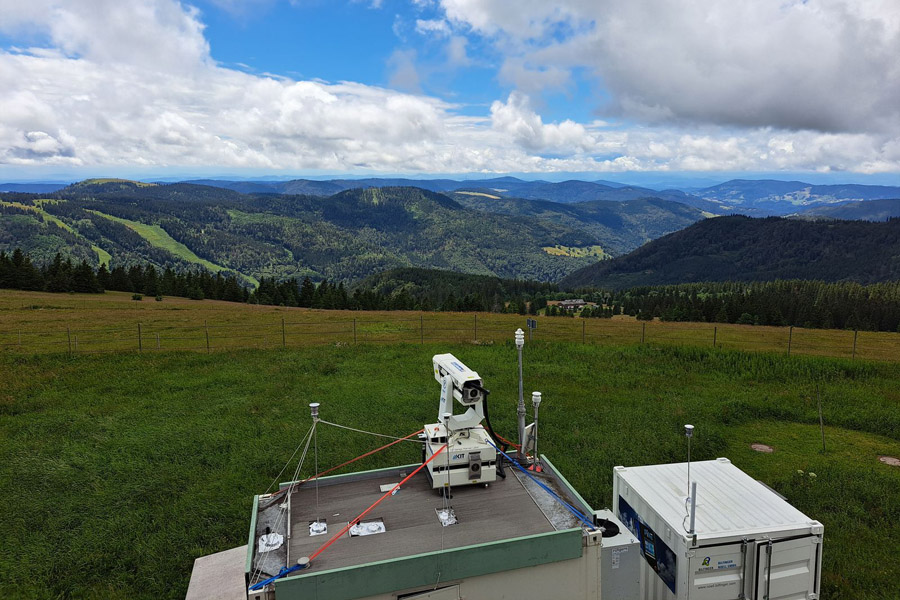Do aerosol particles influence extreme weather events? Measurements on the Feldberg.

Swabian MOSES 2023 is a measurement campaign of Helmholtz research centers and Baden-Württemberg universities on hydro-meteorological extremes (e.g. heat, drought, heavy precipitation and flooding).
In addition to the influence of the heat and drought periods, which have also occurred frequently in Germany in recent years, on vegetation and entire ecosystems, such extreme events also affect the concentrations of trace gases and aerosol particles in the atmosphere. Therefore, it is also of great interest how heat, drought, soil moisture, and meteorological parameters affect the spatial distribution, number concentration, composition, and size distribution of aerosol particles and to what extent there are feedbacks to meteorological phenomena.
The formation of ice particles in convective clouds such as thunderclouds affects the resulting precipitation and cloud development. Ice formation is triggered by ice nucleating particles (INPs), a very small subset of the total aerosol particles. During the measurement campaign, INPs are measured quasi-continuously near convective clouds. The INP concentrations are compared with other aerosol particle measurements (e.g. chemical composition) and meteorological parameters to investigate the role of aerosol particles and INPs in the formation of particularly high-reaching convective clouds that can grow into severe thunderstorms.
Our investigations on the Mt. Feldberg were preceded by similar measurements in the Neckar valley near Rottenburg in 2021 (Kunz et al, 2022).
